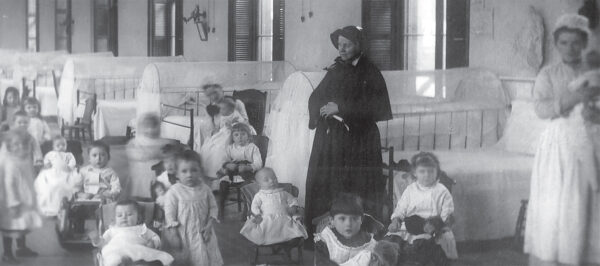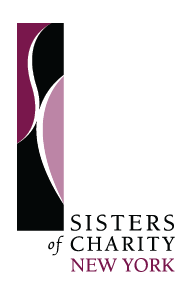
The following is from the Spring 2021 issue of Vision.
The plight of abandoned children in the aftermath of the Civil War was acute. Desperate mothers unable to care for their children would leave them on church steps, at convent doors, at times on the streets of New York City’s slums.
Archbishop John Mc Closkey was determined to do something for the children, and in early 1869 asked Mother Mary Jerome Ely to undertake their care. She, in turn, chose Sr. Mary Irene Fitzgibbon to open a house for them, who “for her encouragement was given five dollars and Sr. Teresa Vincent…” (Paul Blakely, SJ, America).
Sr. Irene was a well-seasoned teacher and principal by this time, but a long-standing passion of hers was to provide loving care for abandoned children. She felt her appointment to this work was a long-awaited sign from God.
As a spiritual daughter of Vincent de Paul and Elizabeth Seton, Sr. Irene knew that she would need the help of concerned and professionally qualified religious and laity if the enterprise were to succeed.
Along with Sisters Teresa Vincent and Mary Frances Wallace, she visited infant asylums conducted by the Daughters of Charity in Baltimore, Philadelphia and Washington to assess best practices.
Then, on October 8, 1869, Mother Mary Jerome and six sisters, including Sr. Irene, met with lawyer Mr. John Develin to sign the Foundling’s Articles of Incorporation, which he had secured from the New York State Legislature.
On October 11, 1869, the mission was officially launched in a house located at 17 East 12th Street. They received their first child later that rainy night, a baby girl, Sarah H.
To supplement the community’s meager resources for the institution’s maintenance, Sr. Irene organized The Foundling Asylum Society, composed of some of the most distinguished and involved members of New York’s Catholic laity. Its first officers were Mrs. Paul Thebaud (whose husband was the first consulting physician of the Foundling), Mrs. Terence Donnelly, Mrs. John Fox and Mrs. Frank Otis.
By 1870 it was clear that the Foundling had outgrown its original quarters. Mrs. Richard Connolly persuaded her husband to apply to the New York State Legislature for a grant to erect a larger building, able to house between 500 and 600 children.
The State Legislature empowered the Common Council of the City of New York to grant a site for the Foundling and appropriate $100,000 towards its construction on the condition that another $100,000 be raised by private contributions.
A Building Committee was formed by the business and professional men of the city to oversee the project. They included Joseph O’Donohoe, John D. Crimmins, William Lummis, John Mullaly, Charles O’Conor, David Develin, T. Glover Barry, Jeremiah Quinlan and John Fox.
Their first fund-raiser, held in conjunction with the Ladies’ Society, realized the sum of $71,000. The remaining $29,000 came from private contributions.
From the Building Committee formed in 1870 grew a permanent Lay Advisory Board, organized in 1874 under the direction of Msgr. Thomas Scott Preston, who served as chair. Officers were John Quinlan, John Develin, Joseph O’Donohoe and William Lummis. Its purpose was to assist the Board of Managers, all of whom were Sisters of Charity.
The Board of Managers and the Advisory Board remained until September 1974 when the Sisters of Charity created the Board of Trustees.
Today the Board of Trustees of the New York Foundling consists of 19 lay and four Sisters of Charity trustees who continue the excellent, compassionate work begun by their forbears. By their commitment, they acknowledge the truth of a recent statement by Bill Baccaglini, current President and CEO of the Foundling:
“The New York Foundling has led the way in effective management and investments for 150 years, thanks in large part to the Sisters of Charity and the Board of Trustees.”
Material taken from the History of the Sisters of Charity by Sr. Marjorie Walsh, SC
By Mary Mc Cormick, SC
